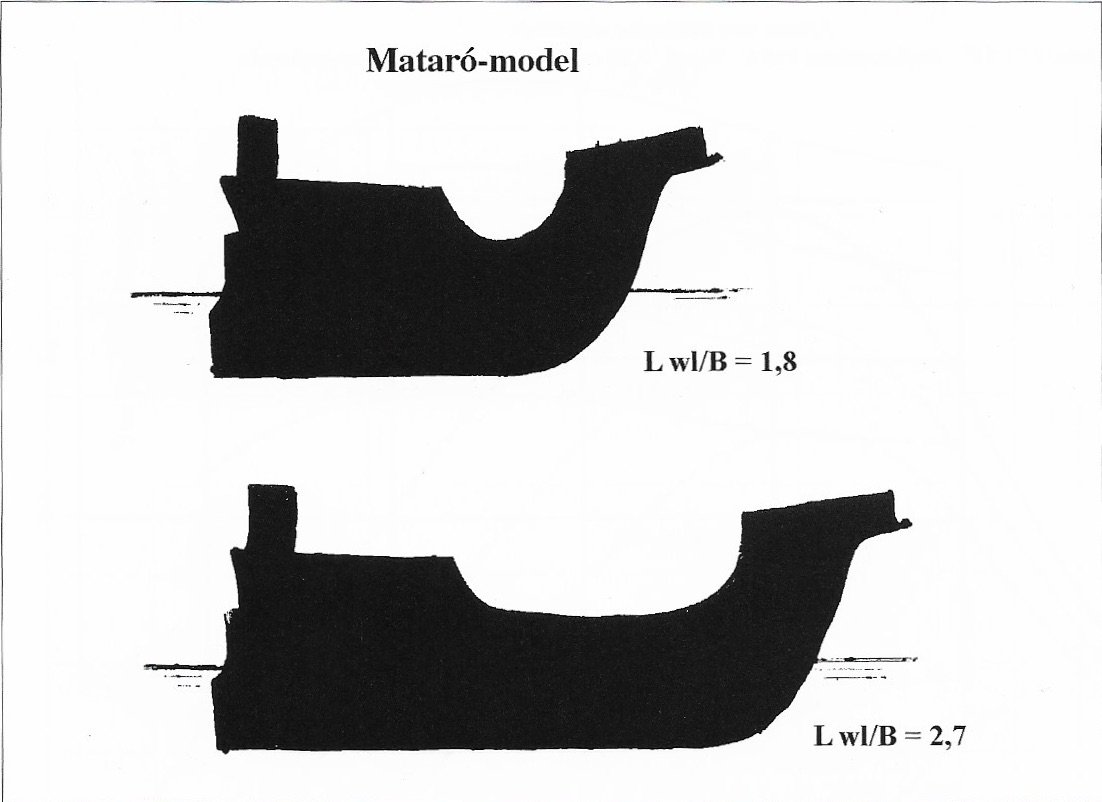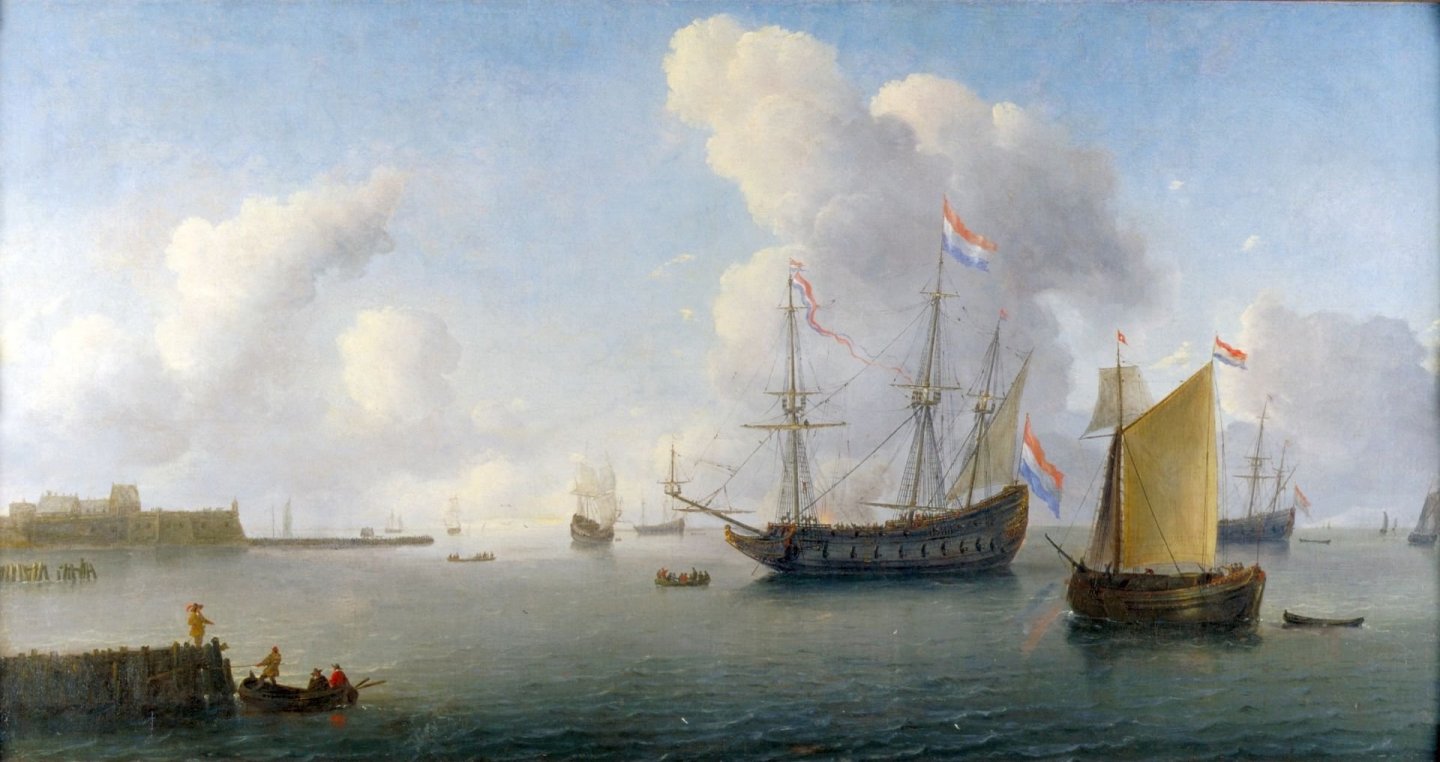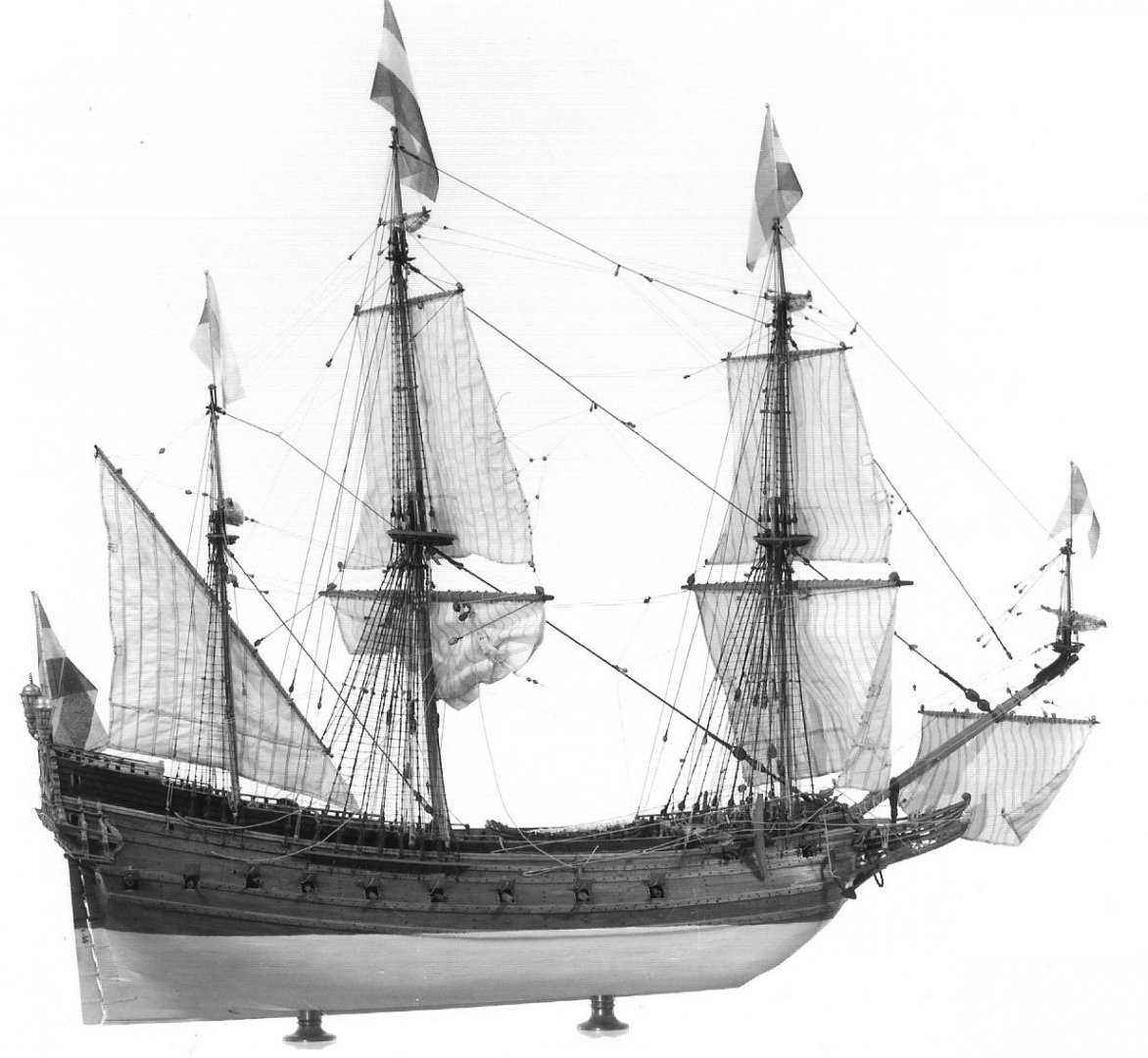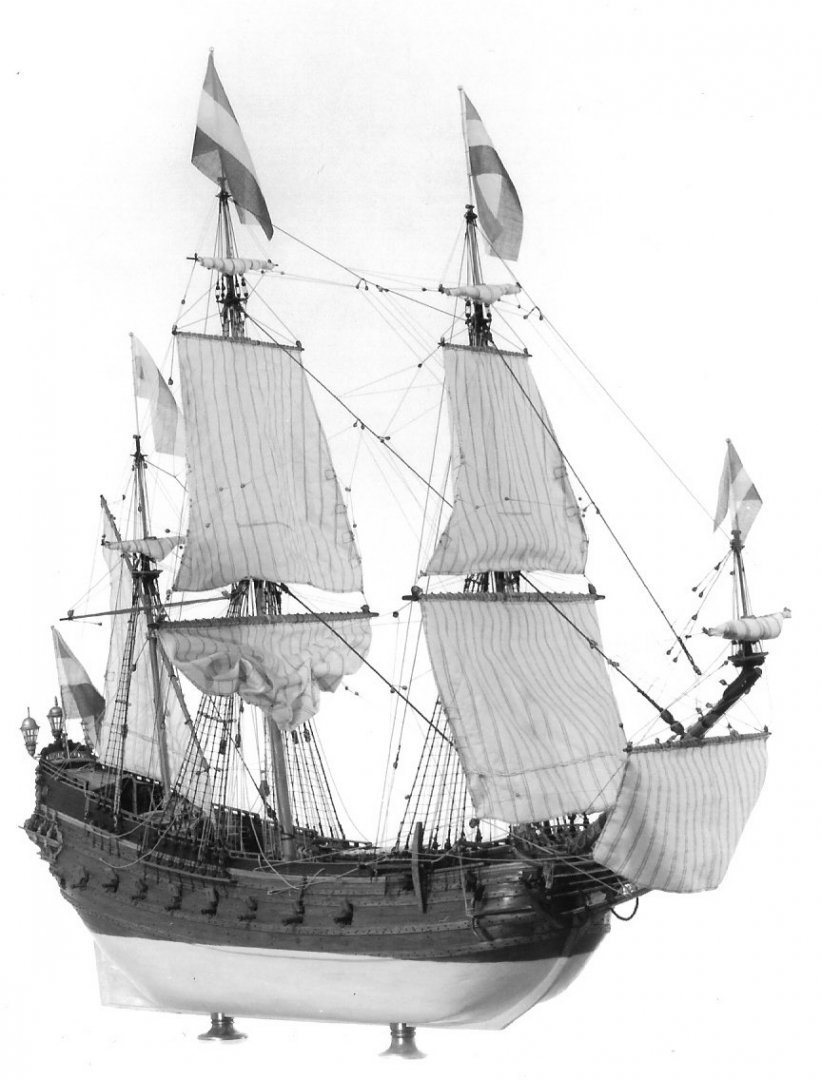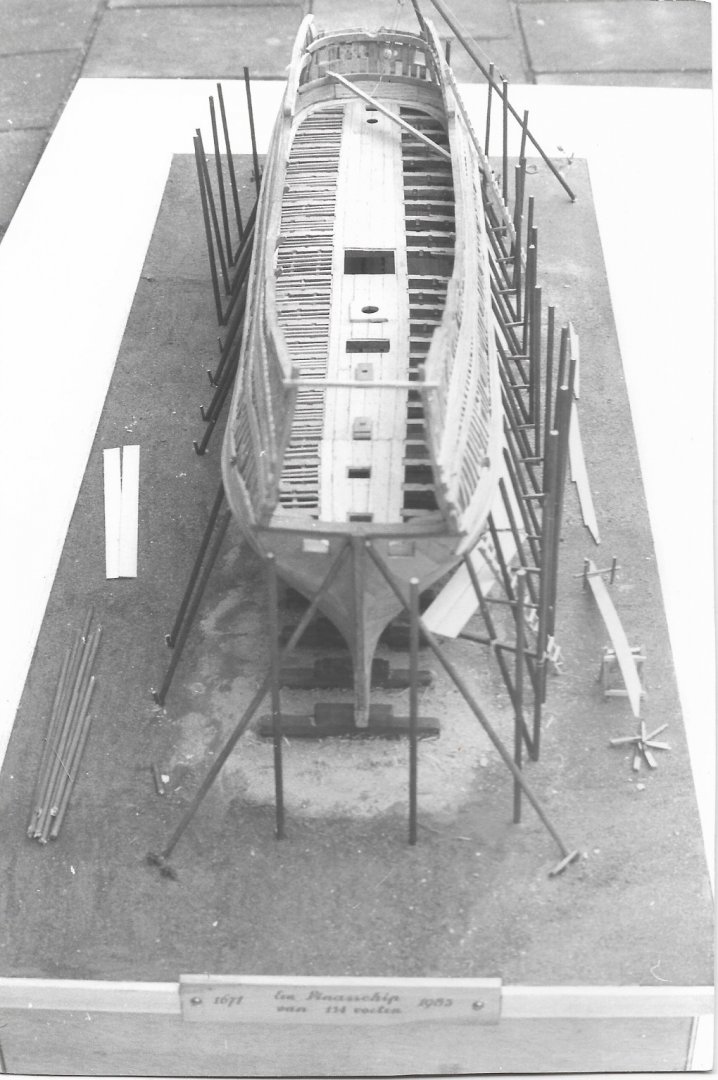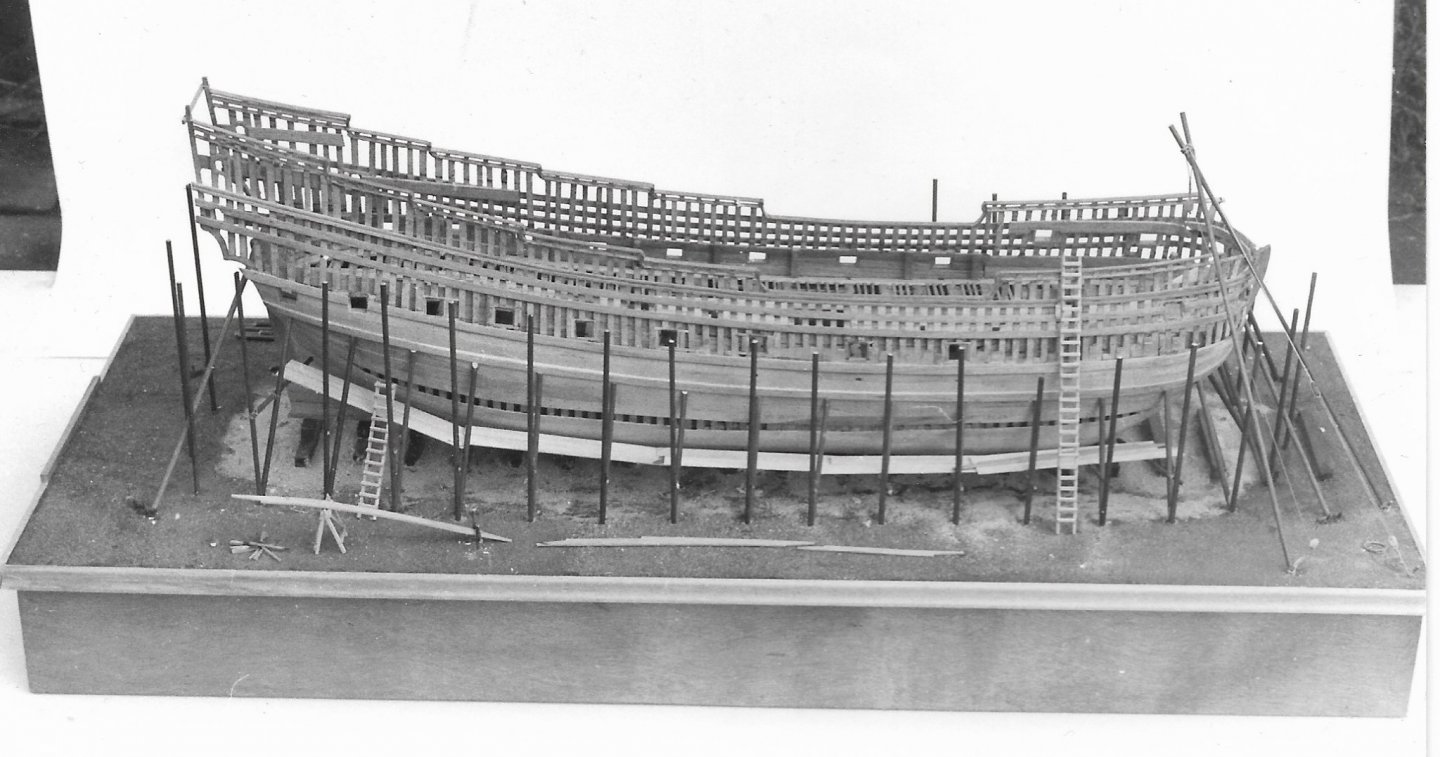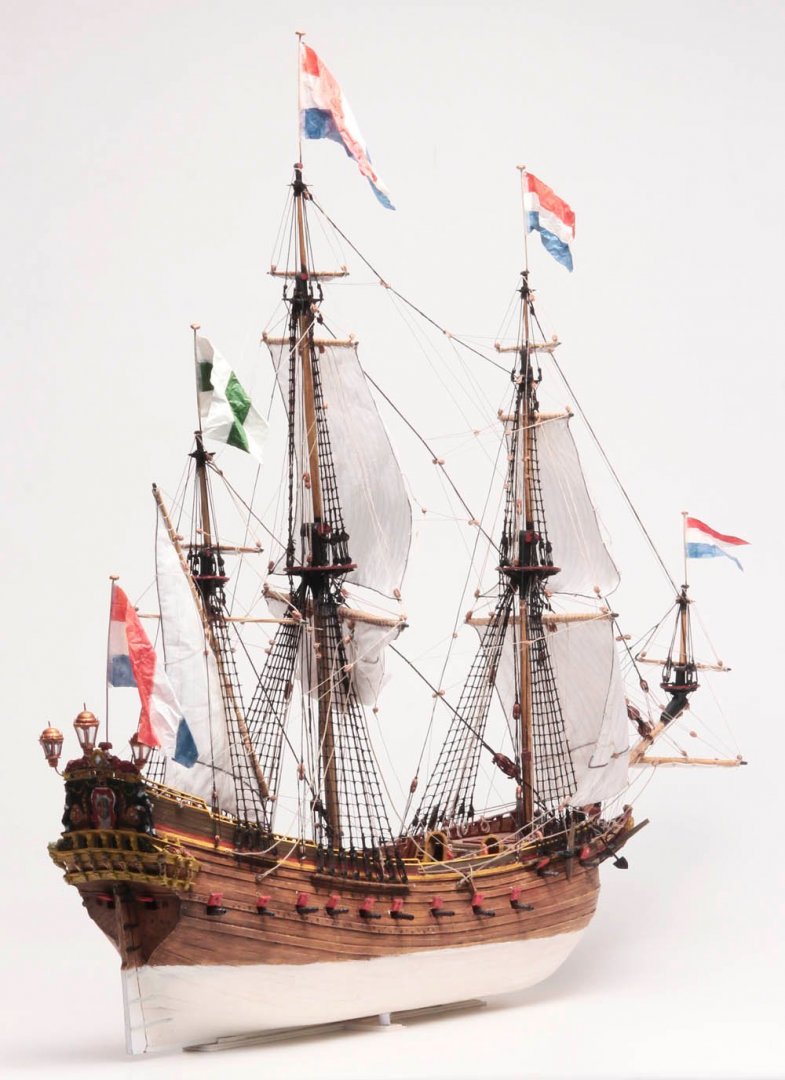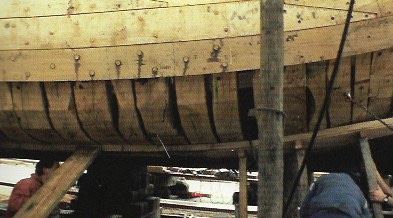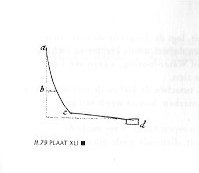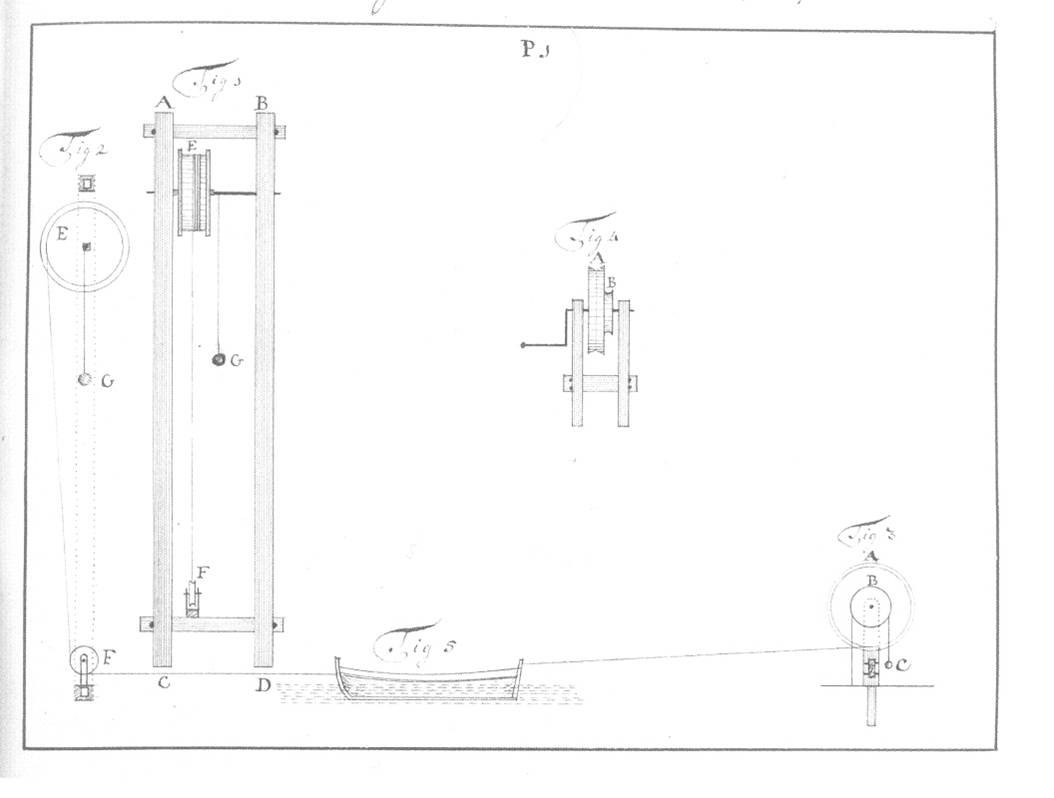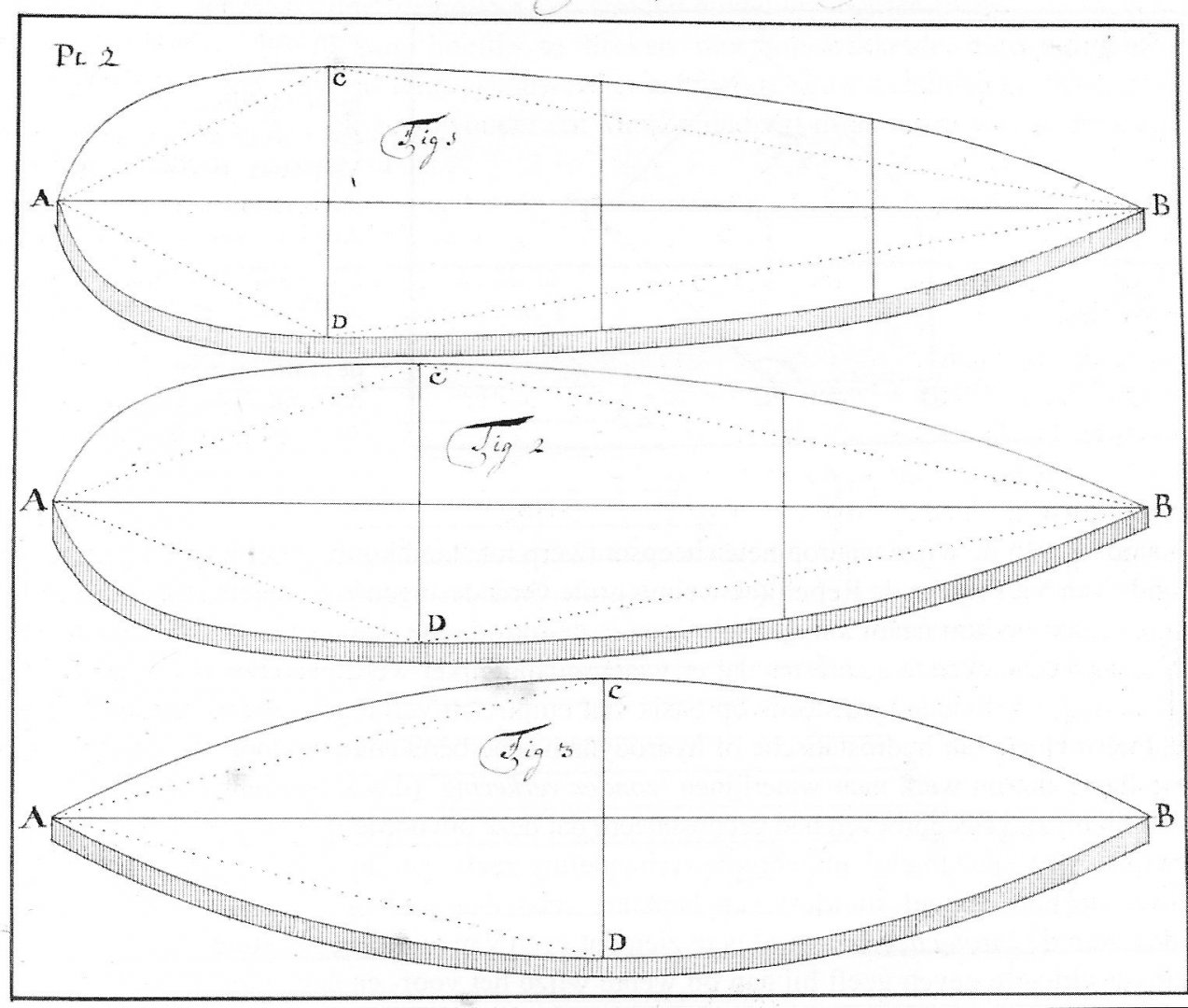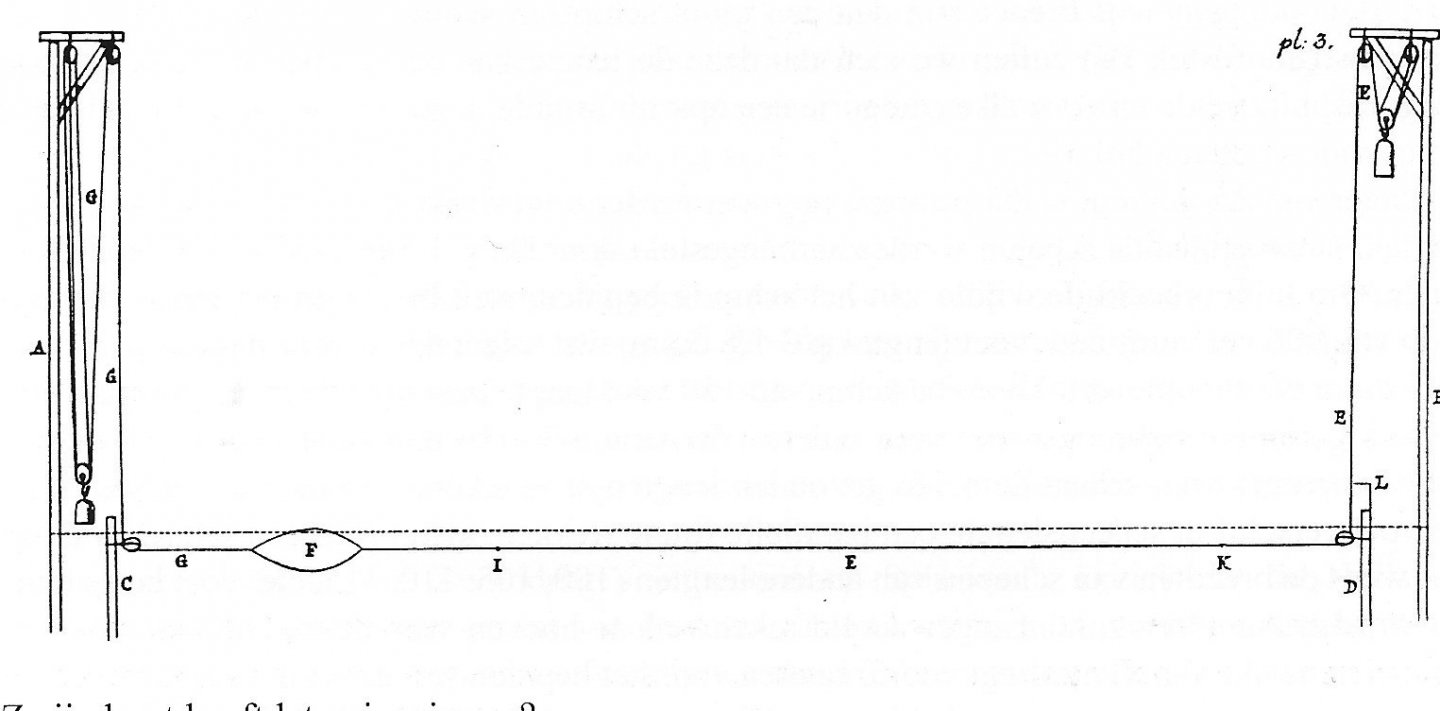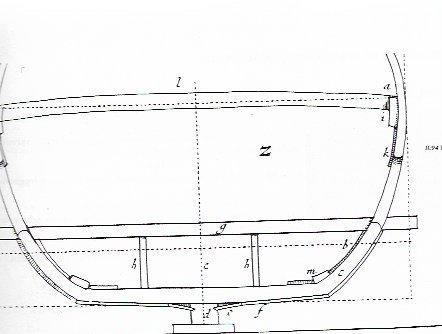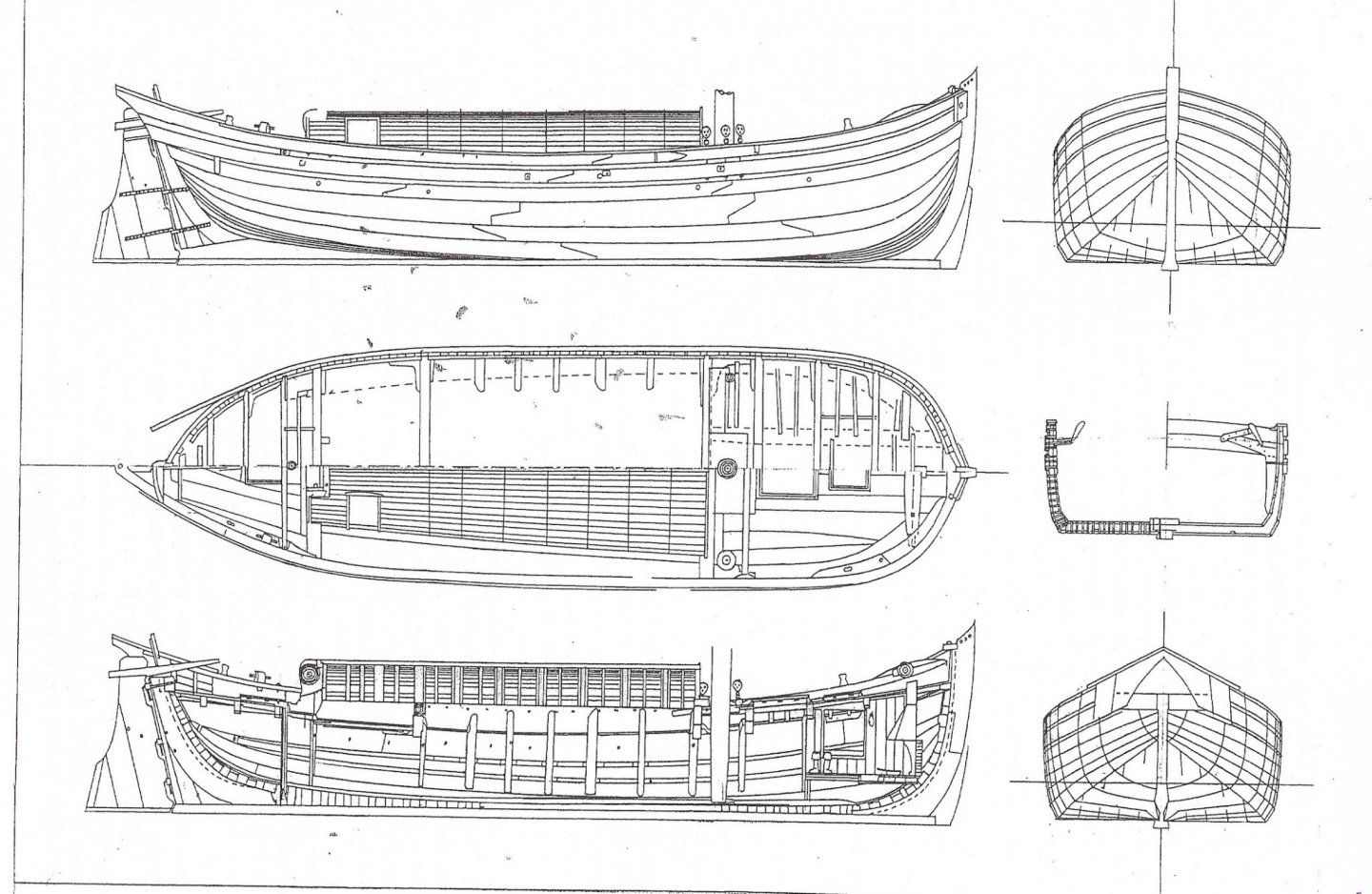-
Posts
690 -
Joined
-
Last visited
Content Type
Profiles
Forums
Gallery
Events
Everything posted by Ab Hoving
-

Coca by Foremast - Amati -1:60
Ab Hoving replied to Foremast's topic in - Kit subjects built Up to and including 1500 AD
I know Waldemar, I too think it's an iconic model and I would not dare to deny anyone's right to duplicate it. I simply wanted to point out that if you want to draw conclusions or solve mysterious issues coming with it, it might be a better idea to work from a model with more authentic dimensions. No more. I recognize the joy of creating a model with an obvious character, keeping in mind the limits of its technical value. I wish you a lot of joy building. No better way to spend your available hours (and more). -

Coca by Foremast - Amati -1:60
Ab Hoving replied to Foremast's topic in - Kit subjects built Up to and including 1500 AD
Nobody said that the model should be excluded Waldemar. Only its dimensions, which are apparently the product of someone’s fantasy. 🙂 -

Coca by Foremast - Amati -1:60
Ab Hoving replied to Foremast's topic in - Kit subjects built Up to and including 1500 AD
Not that I want to discourage any of you, in your queeste for the truth, but seeing the Mataro model again I could not help remembering the study that was done in 2004 by the late professor Gerritsma, a famous shipbuilding scolar I had the honor to know. HIs aim was (amongst other purposes) to see how the Mataro model must have sailed and his conclusion was, that it could not sail at all. If the model had been a true depiction of a ship of its days this must have been the difference between it and the nearest possible shape that could sail: I don't say this because I want to look like someone who thinks he knows things better than others, but the calculations of the professor seemed sound to me and once again I was confronted with the way we should look at ship models, especially old ones. The Mataro model seems to be a charicature of ships of the period. Having said that, you can ask yourself: if the real ships was as deformed as it is in the model, what truth can there be in its details? How can we try to give belaying points and deck furniture a place in the ship if all its dimensions are deformed. That is the only answer I can give to all the questions Waldemar asked. The age of the Mataro model is one big question mark to me. It took me half a life-time to understand a slice of 17th century Dutch shipbuilding and still I think I only scratched the surface. A real good project would be to build the Mataro ship with the dimensions professor Gerritsma suggested and have a new look at all the items that are so hard to locate in a replica of the deformed model. But who am I? -

Coca by Foremast - Amati -1:60
Ab Hoving replied to Foremast's topic in - Kit subjects built Up to and including 1500 AD
As to the discussion about knightheads on post #19: Instead of a knighthead for the main yard, it seems to me that on the picture of the Mataro model there is a heavy block attached to a deck beam in the middle of the quarter deck, which could have served as a knighthead. As to the discussion about the capstan: there are several examples of small capstans of which the foot rests in a clamp underneath the deckbeams, which leaves enough space for a tiller to pass. But maybe I am intervering into a discussion I do not completely understand? -

Roter Löwe 1597 by Ondras71
Ab Hoving replied to Ondras71's topic in - Build logs for subjects built 1501 - 1750
You are doing great. -

Roter Löwe 1597 by Ondras71
Ab Hoving replied to Ondras71's topic in - Build logs for subjects built 1501 - 1750
Willem van de Velde (father) was born in 1611 and died in 1693. The son was born in 1633 and died in 1707. Peter van de Velde was born in Flanders and lived from 1634 till 1723/4. -
Impressive! Really well done and good research. Hat off. Ab
- 2,696 replies
-
- heller
- soleil royal
-
(and 9 more)
Tagged with:
-
I like this thread very much. Only just discovered it. I especially like the way you do your research. In my opinion it does not pay off often to try to build a model of a specific ship, even more so if the data are unsure and controverse. Much better to depict a type, even if you put a name on it later. You found a nice way in between by connecting with archaeological finds and manuscripts. So much better than simply using a plan made by someone who did not know what is right or not either. My compliments Sir. Ab
- 756 replies
-
- galleon
- golden hind
-
(and 2 more)
Tagged with:
-
This is a wonderful tutorial David. Almost a pity that I don’t work in wood any more. 🙂 Ab
- 433 replies
-
- open boat
- small boat
-
(and 1 more)
Tagged with:
-
The answer is simple. Petr. They are two different plans. The one (on top) was done by Cor Emke with AutoCad, the other one from the book (which is the second one you show here) is hand-drawn by myself. There are some differences, but nothing dramatic. Once you are on your way you will encounter some minor aspects that should be changed anyway. Call it 'developing understanding' over a period of 30 years. If you carefully study the 3D images of the 'witsenscheepsbouw' program, you will see what I mean.
-
The link to the program about the pinas is: https://witsenscheepsbouw.nl. As to your questions in your first post: The book was published in 1671. The material used for the ship must be compiled in the period 1660-1670. On paintings pinases are often depicted, although not as often as the men-of-war, which are a bit more spectacular than an armed merchant. Here is an example by van Diest: Draughts were not made in those days, as you know. The '134 feet long pinas' by Witsen is only described in words and sketches in his book. In the next version of the witsenscheepsbouw program we will add all the information in text leading to the reconstruction, together with a lot more new improvements. I have no knowledge about general Dutch source of knowledge about shipbuilding. Some museums have nice sites, showing some of their ship models, Like the Rijksmuseum (https://www.rijksmuseum.nl/nl/rijksstudio/2217046--janzwart/verzamelingen/scheepsmodellen), but I'm afraid they won't bring you much further. You're on your own...
-
The best I can do is refer to this thread, Im posted this week: I made the plans in 1980-1983 and built the model in 1983-1986. It was purchased by the Noordelijk Scheepvaartmuseum (Norther Shipping Museum) in my place of birth Groningen. The book cane out in 1994 and the English translation in 2012. Here are some pictures of what the model looks like: The last two pictures were taken during construction of the model, when it was temporarily place on exhibition ik the Groningen Museum in 1984. I also built it in paper lately: I can advise anyone planning to build a Dutch model to try this one. I learned a lot from building it. I'm sure Kopape will make a beautiful model out of it. So follow this thread! Ab
-
At previous occasions on this and other forums I explained that real trustworthy information about the shape and construction of Dutch 17th century ships is scarce. (http://www.papermodelers.com/forum/ships-watercraft/35441-17th-century-dutch-fluit-14.html, , The Amsterdam diplomat, lawyer, collector and lord-mayor of Amsterdam Nicolaes Witsen (1641-1717) was the first to write a book on the subject of Dutch shipbuilding, Aeloude en Hedendaegse Scheepsbouw en Bestier (Old and Modern Shipbuilding and Managing) 1671. To illustrate his story he described the building of an average ship of his days, an armed trader called a 'pinas'. Three masts, 134 feet long, 24 guns, sailed by a hundred man. It took me 6 years to process his data about the ship into working drawings and to build the model. The knowledge I gained during the work opened the way for me to another career: head of the restoration department for navy models in the Rijksmuseum Amsterdam. In 2006, after having published about Witsen and his pinas I started to work the material around into 3D. I got help from a Belgian gentleman, called Rene Hendrickx, who proved to be an expert on the free downloadable shipbuilding program Delftship. Over three years we worked together to turn every single part of the ship Witsen mentioned into 3D shapes. In the end thousands of files formed together the unquestionable image of a 17th century average ship. The Cultural Heritage Agency, part of the Dutch Ministry of Education, Culture and Science commissioned Tijdlab, a young firm that makes historical 3D representations, to use our results for a program that made the pinas accessible for the public on an internet site: https://witsenscheepsbouw.nl. To say that it has grown into a heavy program is an understatement. It takes time to download the various parts. Therefore the (Microsoft)user gets the opportunity to download the entire program, both the Dutch and the English version, at once on to his own harddisk. That saves a lot of time if you want to access it more than once (which I warmly recommend). Mac users are for the time being convicted to use the online version, preferably through Chrome, which is just a little bit lower in quality, but still very worthwhile visiting. After opening the site you get three choices: Interactively you can watch 14 stages of construction of the ship. This is especially useful to watch the shell-first building method that was applied in those days in Holland, in which the outside planks are placed before any frame part. 2. Here you can 'walk' through the ship, using the w, a, s and d keys of your keyboard. In the next update you can ask the name of any part of the ship you see. 3. Those names can be looked up in the Encyclopedia, where the location of the part in the ship is shown, as well as all the data Witsen provided about that part in his book. Of course it can be viewed from close-by, moving and turning the part any way you want. On a forum for ship modelers it would be an omission not to make available the construction plans of the ship, the only 17th century avarage ship we know. There are also links to the online version of Witsen's book, together with another 17th century author about the subject, Cornelis van Yk with his book De Nederlandse Scheeps-bouw-konst open-gestelt (Dutch Shipbuilding Unveiled) from 1697. Because this is the beta version (we hope to update very soon with more info presented within the program) we invite anyone who has remarks or questions to react and share his thoughts so we can serve the user even better. Please have a look there! Ab
-
Dear Jules, Interpreting written sources is always dangerous. I don't have to remind you of the numerous deaths of people who were victim of different interpretations of religious written sources. The nasty reason is that people tend to select the interpretation that suits them best and completely ignore different signals. A nice example is the Witsen drawing you show in #159 (V), where the bottom is planked and the bilge is not (yet). The next drawing in line is the one I showed in #155 (X), where the bilge is planked and an angle does show up. That's pure logic: before a shipbuilder starts planking, he flattens the frames to give the plank a solid landing, as you can see here on this picture, taken at the Statenjacht Utrecht shipyard: I did not write Witsen's book, I am only comparing it to wreck finds and experiments with models and replicas and over and over again Witsen proved to be a trustful source. If you don't agree with my conclusions, that is alright with me. You are completely free to choose your own interpretations. Better even: write them down and publish them. Different ideas are often useful. The only hesitation I have with your perseverance is a suspicion that you don't want to be convinced. I remember a former sort like discussion, in which you came into a forum as a fresh new member, stating that you had proof of 17th century Dutch shipbuilders designing their ships on paper, referring to a painting by Rembrandt. All the evidence of the contrary was denied and the discussion ended in a chaos. I am afraid this is a repetition. Again, I don't care if you think differently than I do on some matters. You are free to do so as you are also free to make your beliefs public. I don't feel attacked, but please stop bothering me, more or less demanding to agree with you in matters where we think differently. We are here to enjoy our hobby and some people like to hear opinions about the roots of the full-size industry. I pass through what I think I know (which is in fact very little) and if you have problems with what I say, I deeply apologize. Life is complicated enough without useless discussions. Again I wish you all the best with your model of de Gouden Leeuw. Maybe you should post your work here. That would give a good basis for discussion. Better than this one, I'm afraid. Best, Ab
-
Sorry Jules, but I think you have to read better. The method of construction always influences the shape. The borders of the bottom can always be seen, if only by the run of the planking. The transition from a flat to a curve always produces an angle, but the shipbuilder could at wish diminish that angle. But why should he? Nothing remains visible of the underwater part. If you want to give your model a smooth transition, who am I to say that it's not allowed. If you want to read in what I say (or better, in what Witsen writes) that there is no transition, who would fight you over that? I won't. But I cannot agree with you, simply because you want to place words in my mouth. I showed you the literature. Read in it what you want, but don't say that I said you are right. Besides, who am I to judge that? I only have read literature which is accessible to everybody. Good luck with your model.
-
Maybe a short explanation about the method of building is useful. When reading contracts for building ships (our main source on the matter) we almost always see the width of the bottom recorded, together with the measurement how much it rose. For instance: the bottom is wide .. feet and rises .. inch. To control that measure the planks of the bottom were laid in a straight line. It is obvious that the more the bottom rises, the harder it will be to locate the transfer from bottom to bilge. Much loading traders had an almost horizontal bottom, while fast sailers had a more rising one. So on traders the chine will have been more obvious than on frigates. This is Witsen's drawing of that formula: The formula states that the bottom is 3/4 of the width of the ship (c). The height of the top of the bilge (b) is 1/3 of the ship's depth, the width is as many inches less than the height of the master ribband in feet (a). If the chine in the bilge is an invention, then it certainly ain't mine....
-
Hello Roger, Of course you are right stating that Froude turned tank-tests into scientific rules. But in an empirical way shipbuilders did tests which, according to professor Gerritsma from the Technical University Delft were absolutely valid: for instance in the 1750's Pieter van Zwijndregt built a 186 feet long test track in the Zalmhaven (Salmon Harbor) in Rotterdam, with weights to get an even propulsion and a pendulum to measure the time. Planks were sawn into waterline shapes and of all tests the results were compared and translated into waterline shapes in his designs. Chapman shows an almost identical set-up in his book from 1757. As for the matter of the hard chine: I don't think I ever stated that ALL Dutch ships had a chine. What I said was, that if a ship's bottom is completely straight in section (it may be rising, but still in a straight line, because that's the way the builder controled his design), the transfer to the sides is marked by a chine. Of course the builder is free to diminish the angle by lifting the outmost bottom plank a bit, just like Witsen declares) but the transfer from straight to rond causes a visible transition. It might be worthwhile for anyone who doubts that to try it at home, like I did. The fact that the few 'hard' designs we know of 17th century ships (for instance in van Dam's book of 1701 about the history of the East India Company) all give the edge of the bottom as a measuring points indicates that there was a way to recognize this location. And the amount of degrees of that angle is something we simply don't know. We are sure however for smaller ships, like the one I showed earlier and which was made after an archeological find, there certainly was one.
-
I agree Roger. Not only the hydrodynamic performance of ships is relatively new, even the matter of stability, seen from a theoretical point of view was left alone for a long time. I spoke to an marine engineer who was (on his own initiative) working on the stability of our post-war Navy ships. Nothing about their stability appeared to be worked out in math. On the other hand, there were shipbuilders in Rotterdam around 1750 who performed tank tests on shaped planks. Chapman came to visit them and published a very identical set-up in 1775. Bouguer, Euler and Bernoulli discovered the physical laws for stability, resistance and displacement in the 1750's but is took ages before their discoveries penetrated into the shipbuilding world, especially for as far as private yards are concerned. But whatever they invented, the real problem was our shallow waters. But indeed a handicap can change into a useful design, even if it is based on limitations instead of on ingenuity. 🙂
-
Eberhart, I think PietFriet is right here. The fact that Dutch ships showed an angle between bottom and bilge was not the result of a choice the builders had. It was simply the consequence of the method of construction. And of course in some ships it showed more than in other ones. I tested the shell-first building proces, both in model scale and as a witness building the 'Duyfken' in Australia, and the outcome was (apart from that angle) that the bottom planks ran in a straight line in section from keel to the beginning of the bilge. Shipbuilders could choose to lift the outer plank a bit to diminish the angle, but the straight line between keel and bilge was necessary, because of the formulae that directed the builder in his construction proces. I hope to illustrate the method in my pinas program, which should have been online by now. However, working with enthousiastic IT-folks who are not specifically ship-building experts, delays the proces a bit because of all the corrections and improvements that have to be executed. I hope for this week, because there is a deadline from the Dutch Agency for Cultural Heritage, which finances the program. So PietFriet, hang on, we are on our way...
-
It shows how little we know.:-) Still, tests show that the question wether or not there is a chine depends on the builder. He can decide to give the outmost bottom plank a small angle, so that the chine does not show too much. But what will always be a stigma on a shell-first built ship is that the planks of the bottom are in a straight line in section. Some ships, for instance cats, meant to have wood as cargo, had only one plank in the bilge. Now, that shows a chine. But wait for my 'pinas-program' to come out (probably next week). I think it gives a lot of information on this point.
-

Roter Löwe 1597 by Ondras71
Ab Hoving replied to Ondras71's topic in - Build logs for subjects built 1501 - 1750
If there is one thing sure about the rigging of a ship, than it is that the ropes have to be belayed somewhere. In the case of your model I don't exactly know what the authors of the drawings had in mind, but as far as I am concerned you are free to mount pinrails in the sides anywhere you need them. If I am honest I must say that I have serious doubts about the pins in the railings athwarthships you placed your circle around. They seem very unlikely to me, but pardon me if I say something very rude here. It seems one has to be careful on this forum about saying things which might hold some criticism...
About us
Modelshipworld - Advancing Ship Modeling through Research
SSL Secured
Your security is important for us so this Website is SSL-Secured
NRG Mailing Address
Nautical Research Guild
237 South Lincoln Street
Westmont IL, 60559-1917
Model Ship World ® and the MSW logo are Registered Trademarks, and belong to the Nautical Research Guild (United States Patent and Trademark Office: No. 6,929,264 & No. 6,929,274, registered Dec. 20, 2022)
Helpful Links
About the NRG
If you enjoy building ship models that are historically accurate as well as beautiful, then The Nautical Research Guild (NRG) is just right for you.
The Guild is a non-profit educational organization whose mission is to “Advance Ship Modeling Through Research”. We provide support to our members in their efforts to raise the quality of their model ships.
The Nautical Research Guild has published our world-renowned quarterly magazine, The Nautical Research Journal, since 1955. The pages of the Journal are full of articles by accomplished ship modelers who show you how they create those exquisite details on their models, and by maritime historians who show you the correct details to build. The Journal is available in both print and digital editions. Go to the NRG web site (www.thenrg.org) to download a complimentary digital copy of the Journal. The NRG also publishes plan sets, books and compilations of back issues of the Journal and the former Ships in Scale and Model Ship Builder magazines.



